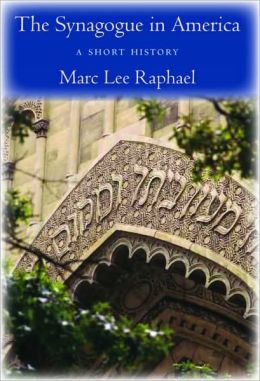Category Archives: Modern Orthodoxy
“Modern Orthodox Jews have America’s highest rates of ‘spousal homogamy’…”
“…in the United States, Modern Orthodoxy has become largely an upper middle class phenomenon”
A Brief, Sociological Sketch of the Modern Orthodox in America
“Modern Orthodoxy is Modern. But it is also Orthodoxy.”
Rabbi Jonathan Sacks believes that Modern Orthodox Jews will be leading the American Jewish Community
This gallery contains 0 photos.
“It has become really clear that Orthodoxy is the only element of the Jewish...“Orthodox rabbis rarely made any comments on the events unfolding on the American scene in the 1920s or early 1930s”
…Orthodox rabbis rarely made any comments on the events unfolding on the American scene in the 1920s or early 1930s. They generally ignored race, immigration, pacifism, isolationism, the League of Nations, lynching, Sacco and Vanzetti, civil liberties, the Klan, racial segregation, industrial (textile, railroad) strikes, Einstein’s theory of relativity, modern technology, modern war, Prohibition, economic warfare, Bolshevism, political events in Europe, and the Depression. Only with the rise of the Nazis and the 1939 White Paper that drastically curtailed Jewish immigration to Palestine, did European events become part of their sermons. Instead, they talked about Torah (which, all Orthodox rabbis agreed, God had revealed verbally to Moses at Mt. Sinai), commandments (“word of God,” they all agreed), ceremonies, customs, observances, rituals, holidays, festivals, and themes associated with the calendrical events in the Jewish/Judaic year. The scientific and philosophical literature of their day was useful primarily to support the conclusions of Judaic values and beliefs.
Marc Lee Raphael, The Synagogue in America: A Short History (New York & London: New York University Press, 2011), 90.
“The content of American-educated Orthodox rabbis’ English-language sermons was dramatically different from that of the (mostly) Yiddish-language sermons of an earlier generation”
…the content of American-educated Orthodox rabbis’ English-language sermons was dramatically different from that of the (mostly) Yiddish-language sermons of an earlier generation. This was particularly true between the World Wars in New York City, where Leo Jung on the West Side and Joseph Lookstein on the East Side—self-proclaimed ‘modern Orthodox” rabbis—drew upon the works of Carlyle, Dickens, Freud, Goethe, Ibsen, William James, Macaulay, Shaw, Tennyson, and Whitman, as well as on the vast body of rabbinic literature, to craft sermons much like those of American-born Reform and Conservative colleagues. Keeping in mind the warning of a contemporary Conservative rabbi, Israel Herbert Levinthal, that his printed sermons were often delivered ‘extemporaneously” and written “out a long time after their delivery,” the historian looks for typescript sermons or sermons reprinted in synagogue bulletins and the Jewish press immediately after delivery. They are abundant, and, by the 1930s, Orthodox rabbis in various places turned a Latin phrase, digested a German book on philosophy or literature, or followed the scientific arguments of the leading writers of their time as easily as they could quote from the Talmud.
Marc Lee Raphael, The Synagogue in America: A Short History (New York & London: New York University Press, 2011), 89-90.
“Modernizing Orthodoxies”: “a group of religious movements bearing a familial resemblance”
Rather than seeing Orthodoxy as a more or less fixed entity, with “modern” and “ultra” flavors, I suggest we look at it as a cluster of processes, enacted across a range of what I call “Modernizing Orthodoxies,” by which I mean a group of religious movements bearing a familial resemblance, based on some core features, through which each works and reworks in its engagements with modernity.
Yehudah Mirsky, “Modernizing Orthodoxies: The Case of Feminism”, in To Be a Jewish Woman: Proceedings of the Fourth International Conference: Woman and Her Judaism, June 2005, ed. Tovah Cohen (Jerusalem: Kolech – Religious Women’s Forum, 2007), 37.
“What has changed with Orthodox women in the last two decades in reality is astounding”
What has changed with Orthodox women in the last two decades in reality is astounding. Some of the initiatives started by JOFA and other forward-thinking organizations took hold. Some didn’t. Some failed miserably. But some of the vision “leaked” out to other communities and organizations, and change happened where we least expected it.
We started noticing that the haredi communities that denounce feminism had their own feminist issues: women were standing up to their leadership about domestic violence and sexual abuse and even agitating in order to get into Hatzolah, the volunteer ambulance corps. Places that 20 years ago would not have considered celebrating a bat mitzvah or a girl’s birth were regularly holding those celebrations. Women’s tefillah (prayer groups), which had been seen as crazy and “out there,” became the more conservative bat mitzvah alternative to partnership minyanim (where women lead parts of the service).
In Israeli newspapers after Simchat Torah, observers were struck at seeing women dancing with Torahs in places you’d never think possible. And no one batted an eye. And even on the issue of agunot, or women unable to get Jewish divorces from recalcitrant husbands, which is seen by so many as the big failure because we have yet to develop a systemic solution, the Orthodox community has made incredible strides. It sits front and center on the communal agenda, and different rabbinic courts and organizations are using their clout to try to solve the problem case by case.
The seismic change in the community has been women’s learning. Twenty years ago there were a handful of women learning torah sheba’al peh (the Oral Law). Today there are dozens of women’s programs that teach Mishnah and Talmud. No one seems to think twice about it.
Bat Sheva Marcus, “How Change Happens”, The Jewish Week (6 December 2013), 23.
